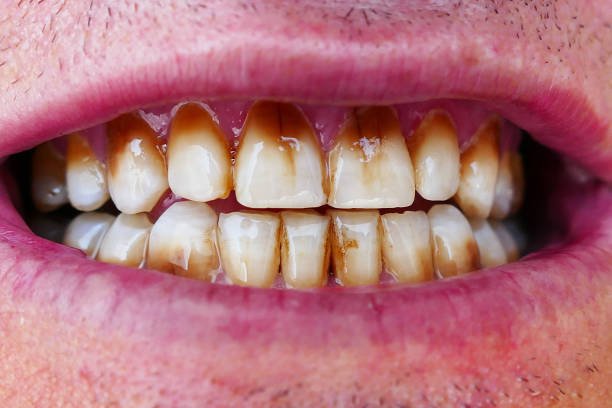Impact of cigarette smoke on teeth and generaly quality of oral health is nowadays very popular topic. Besides the fact that cigarette smoke is very harmful for the environment, one very important question is how it affects direct users.
About cigarette smoke harm on oral health, ways of prevention and alternatives, we have talked with dr Rade Mrdak, specialist in oral surgery from stomatologist ambulance Mrdak. He explained all of the sideffects of the cigarette smoke and how users should cope with consequences.
Antena M: How does cigarette smoke affect the color of teeth and gums? Also, how quickly does cigarette smoke cause discoloration on teeth and gums?
Dr Mrdak: You have heard about the harmful effects of cigarette smoke on dental health many times. Cigarette smoke, which is a a product of cigar combustion, is a mixture of thousands of different substances, of which 250 are harmful to health and over 60 are carcinogenic. Of the harmful substances, nicotine is most often mentioned, which creates psychological and physical addiciton, but besides it there are other much more harmful substances, such as tar, which, when burned at high temperatures, turns into a resin that is easily absorbed by the teeth and soft tissues in the oral cavity. Soluble pigments of cigarette smoke are incorporated into the chronically weakened hydroxyapatite lattice and cause tooth discoloration. The ingredients of tobacco smoke affect our body systemically and locally. Locally, they cause changes in the form of nicotine pigmentation, bad breath, nicotine palate, effects on small blood vessels in the oral cavity, taste disorder, peeling of the oral epithelium. It is already known that smoking can turn your bright teeth yellow overnight and that smokers' teeth are generally yellower and darker than non-smokers. The amount of cigarettes you smoke plays a big role in how much your teeth will change color, which also depends on how long you have been consuming tobacco products. However, regular tobacco usage can discolor your teeth, whether you smoke one pack or just five cigarettes a day.
Antena M: Considering the discoloration it causes, are there certain treatments that we could apply to eliminate the effects that tobacco smoke has caused and how effective are these treatments?
Dr Mrdak: There are treatments that can remove smoking pigmentation on the teeth. This procedure entails the removal of soft and hard deposits from the teeth, followed by sandblasting of the teeth. It is a regular treatment that all patients should do twice a year, because dental plaque is the first stage in the development of periodontal disease. In addition to this treatment, teeth whitening can also be done, but under the supervision of a professional.
Discoloration can also appear on the edge between the filling and the tooth, in these situations a new filling has to be made.
Antena M: When we talk about interventions on the teeth, meaning users who had interventions in the form of artificial crowns, bridges, implants, etc., how does tobacco smoke affect that category of users? To what extent does tobacco smoke impair the quality and durability of artificially implanted parts?
Dr Mrdak: Tobacco smoke greatly affects the durability of implants. Research has proven that patients who smoke have an 11 times higher risk of implant therapy failure. Tobacco smoke affects the bone and connective tissue around the implant in such a way that it changes the vascularization and oxygenation of the surrounding tissue and accelerates bone resorption. In chronic smokers, both cellular and humoral immunity changes, thus accelerating the development of infection around the implant - peri-implantitis. It also changes the color of crowns and bridges and affects the aesthetic moment.
Antena M: Is it possible to develop more serious oral diseases, including carcinogen ones, by inhaling tobacco smoke?
Dr Mrdak: As I have said, tobacco smoke also contains carcinogenic substances that can trigger precancerous processes in the oral cavity. Today, leukoplakia and erythroplakia are considered the most important precancerous changes in the oral cavity, significant for the development of oral cancer.
The most common tumors of the oral cavity are squamous cell carcinomas, which account for over 50% of all malignancies.
The therapy consists in the removal of harmful habits and in the surgical removal of precancerous changes down to the macroscopically healthy tissue, which means that one layer of healthy tissue is also removed.
Antena M: What is your advice? How to reduce the impact of tobacco smoke, or what to recommend to smokers so that their oral health is less endangered?
Dr Mrdak: The advice would definitely be to stop smoking as the best method of preventing local and systemic diseases. However, a large number of patients cannot persevere in this process, therefore I would suggest to my patients to get informed about some less harmful, alternative products.









Komentari (0)
POŠALJI KOMENTAR